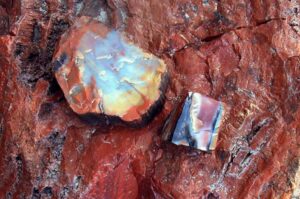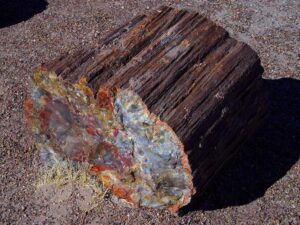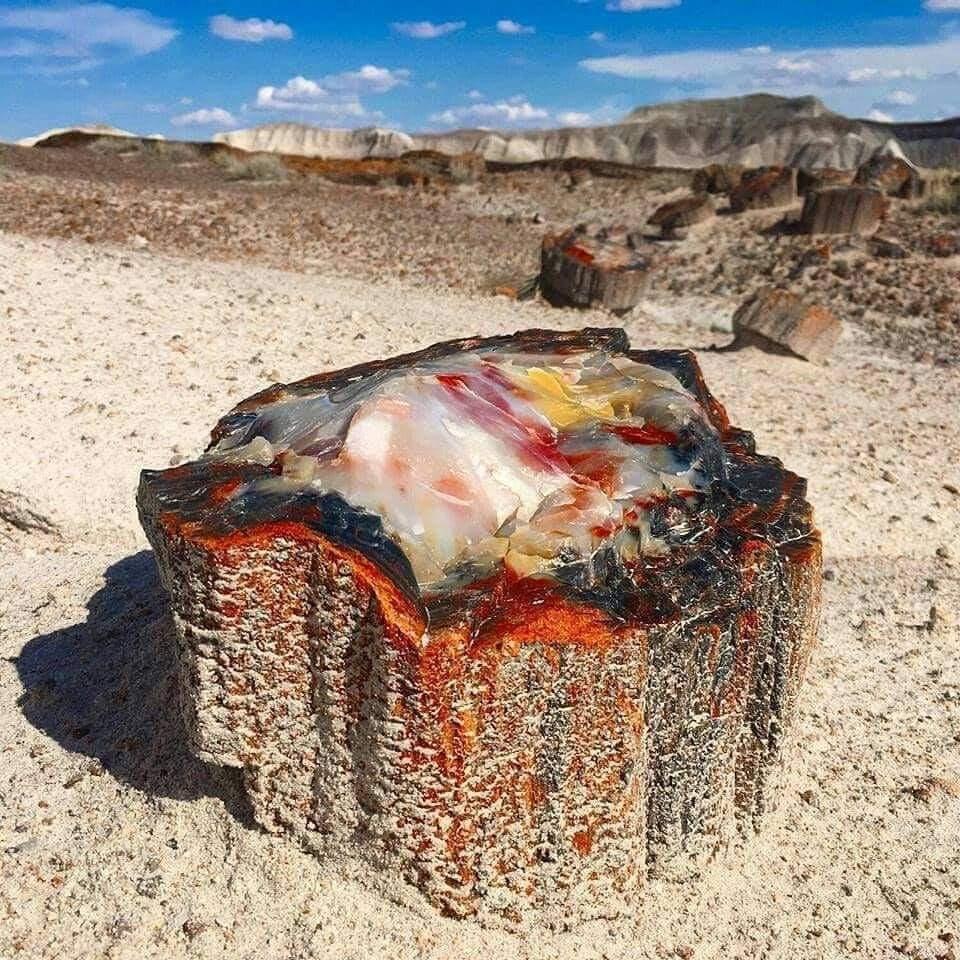What is petrified wood? It is essentially a fossil. The process by which a tree or plant with tree-like characteristics turns into stone through mineralization is called petrification. It occurs when silt or volcanic ash bury plant materials, protecting it from degradation with the help of organisms and oxygen. Then, as groundwater with high concentrations of dissolved solids runs through the sediment, the original plant material is replaced by silica, calcite, pyrite, or another inorganic (yet beautiful) substance like opal.

As a result, the original woody substance turns into a fossil, often retaining features of the wood, bark, and cell structures. Of course, that takes millions of years to happen.
Unlike other plant fossils, which are typically impressions or compressions, petrified wood is a three-dimensional representation of the original organic material. Some examples of petrified wood are so well preserved that they are only identified as fossils when someone picks them up and is surprised by how heavy they are.

These specimens are rare because of their nearly perfect preservation. On the other hand, instances with clearly visible bark and wooden constructions are rather abundant. One of nature’s most beautiful creations is petrified wood, as demonstrated by the pictures below.


